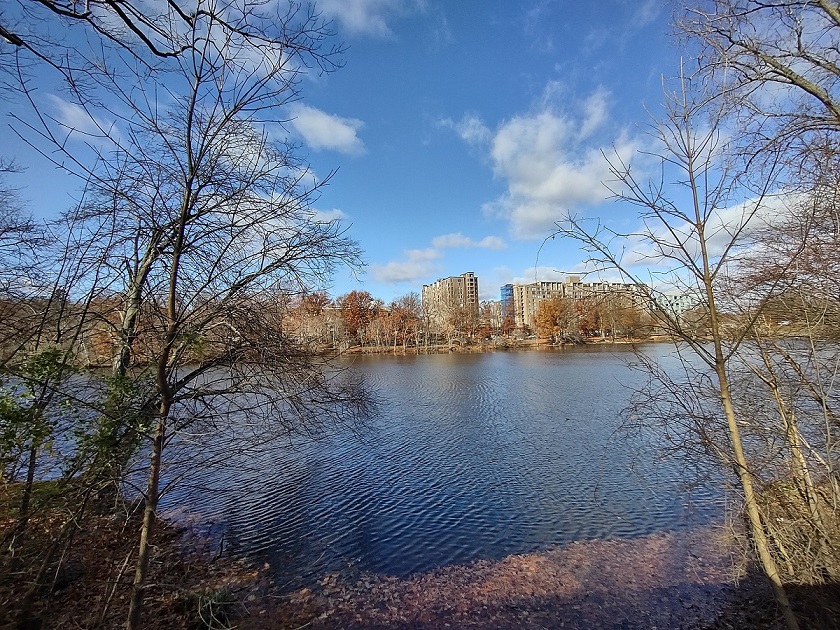Happy Birthday, Mr. Olmsted
Frederick Law Olmsted is considered the father of landscape architecture. This year marks the 200th anniversary of Olmsted’s birth on April 26, 1822. Accordingly, there are year-long celebrations of his life and legacy. The National Garden Clubs (NGC) launched its celebration with a webinar by Kirk Brown on February 8, When Can We Celebrate Olmsted’s Legacy? Kirk has served as an instructor for the NGC Landscape Design Schools and has made many presentations to garden clubs and at NGC meetings. His informative and entertaining presentation is available for viewing until May 11. Request the link from an NGC board member (including your state garden club president).
Olmsted was a journalist and a traveler. He worked with the U.S. Sanitary Commission, a precursor to the Red Cross, during the Civil War. He was an early leader in the conservationist movement who created an ethical framework for the government to reserve public lands to protect their value for posterity. He was a tireless proponent of policies that would create a system of national parks and is generally credited with saving the Niagara and Yosemite Reserves from exploitation and for creating the foundation on which the National Park Service is based.
Working first with Andrew Jackson Downing and later with Calvert Vaux, Olmsted created the concept of American landscape design. Olmsted and Downing created the Greensward Plan, which was accepted as the design for New York’s Central Park but before it could be executed, Downing died in a tragic steamboat fire. Olmsted and Vaux worked together to execute the plan. The design of Central Park incorporates Olmsted's social consciousness and commitment to egalitarian ideals. Influenced by Downing and his own observations regarding social class in England, China, and the American South, Olmsted believed that the common green space must always be equally accessible to all citizens and was to be defended against private encroachment. This principle is now fundamental to the idea of a "public park." The Central Park design inspired future parks to have the perceived value of preserving or creating natural or naturalistic outdoor spaces for the enjoyment and well-being of the people. There was a presumption that there was an uplifting effect of rural scenery. Parks were soon recognized as therapeutic escapes from congested cities. It soon became accepted in cities of all sizes that parks were urban necessities for mental and physical well-being.
Olmsted’s many projects span the country. Not only did he create city parks (e.g., Prospect Park in Brooklyn, Belle Isle Park in Detroit, and Jackson Park in Chicago), but he soon developed the concept of public parkland as interconnected systems of parks (e.g., the public park systems for Milwaukee, Buffalo, and the Emerald Necklace in Boston). Other projects included the design of numerous school and college campuses (Stanford University), the Biltmore Estate grounds in North Carolina, the World’s Columbian Exposition (the 1893 Chicago World’s Fair), and the United States Capitol Grounds.
Kirk tells us that Olmsted’s basics are Grass, Water, and Woods. Influenced by English landscape and gardening, Olmsted designed primarily in the pastoral and picturesque styles. The pastoral style featured vast expanses of green with small lakes, trees and groves and produced a soothing, restorative effect on the viewer. The picturesque style covered rocky, broken terrain with teeming shrubs and creepers, to express nature's richness. The picturesque style played with light and shade to lend the landscape a sense of mystery.

Olmsted was the one man who dominated the first forty years of landscape architecture and his association with landscape architecture was perpetuated for decades through the extensive work of his sons, Frederick, Jr., and John Charles. The new profession of city planner evolved from landscape architecture in the early 20th century.

In 1883, Olmsted established his home in Brookline, Mass. There he established Fairsted, the world’s first full-scale professional office for the practice of landscape design. This property was acquired by the National Park Service in 1980 and is now operated as a National Historic Site open to the public. His sons were founding members of the American Society of Landscape Architects (ASLA) in 1899. ASLA promotes the practice of landscape architecture and advances the profession through advocacy, education, communication, and fellowship.
There are many books by and about Frederick Law Olmsted, including numerous internet resources. Olmsted 200 (https://olmsted200.org/) is an extensive site devoted to celebrating the 200th anniversary of this remarkable man and Celebrating Olmsted Parks for All People. Kirk challenges us to celebrate the anniversary by visiting an Olmsted city, park, or experience, and thanking the man who brought it to us.
The photos above are courtesy of the National Association of Olmsted Parks.
National Garden Clubs, Inc. is a 501(c)(3) organization that aims to promote the love of gardening, floral design, and civic and environmental responsibility. There is a local club near you, click here to find one and join. NGC welcomes blog article submissions, e-mail the Blog Administrator at blog@gardenclub.org.

 Member Login
Member Login






